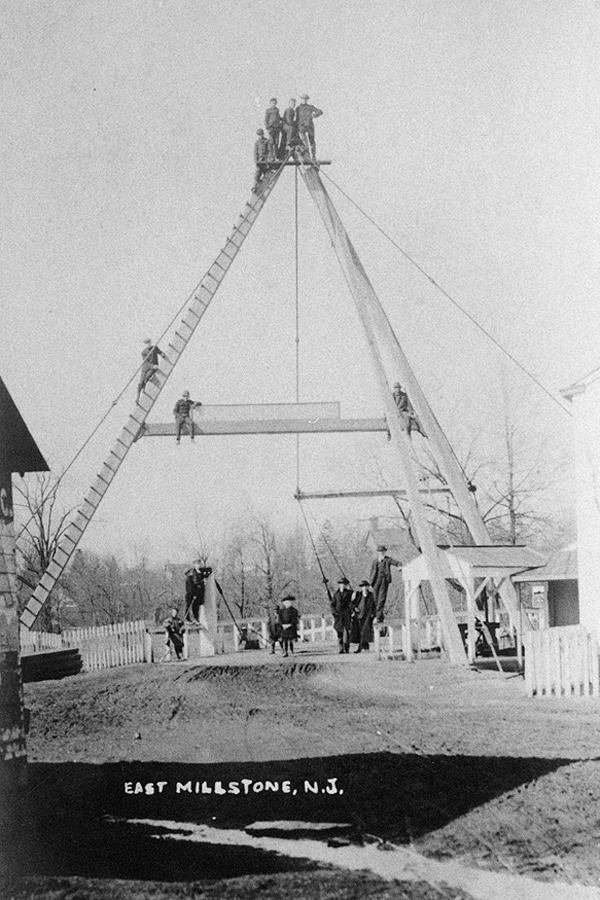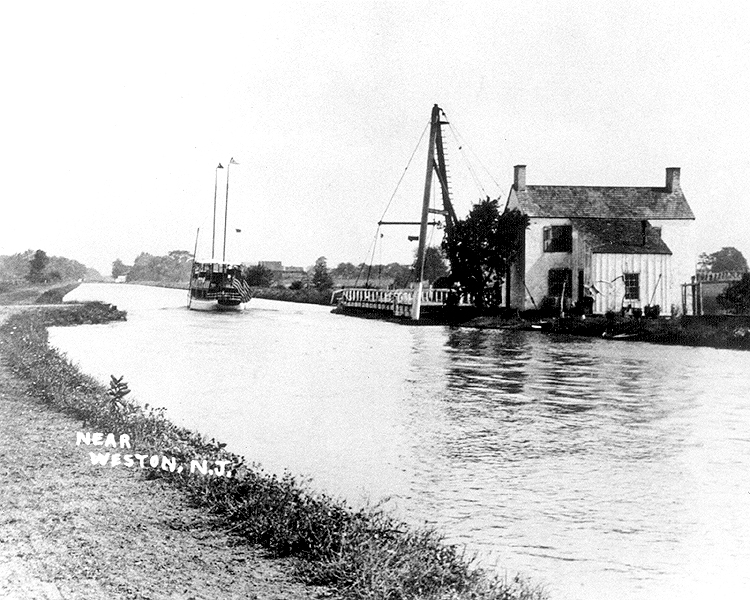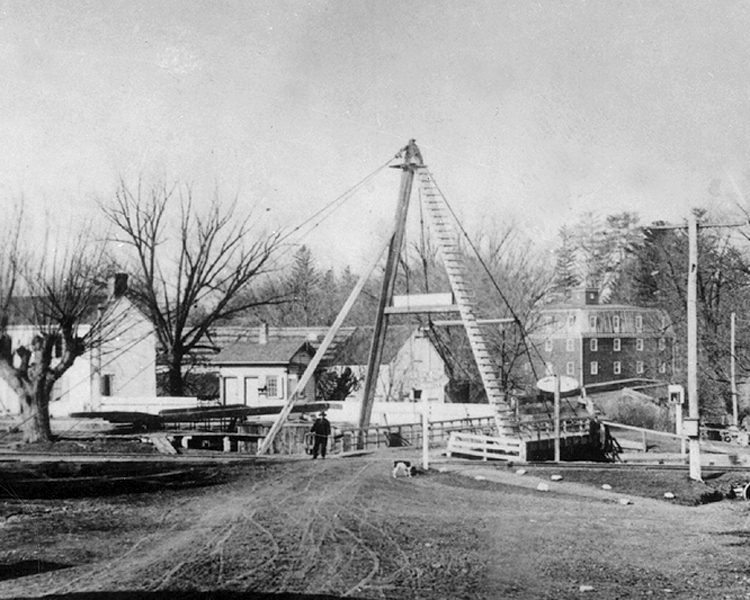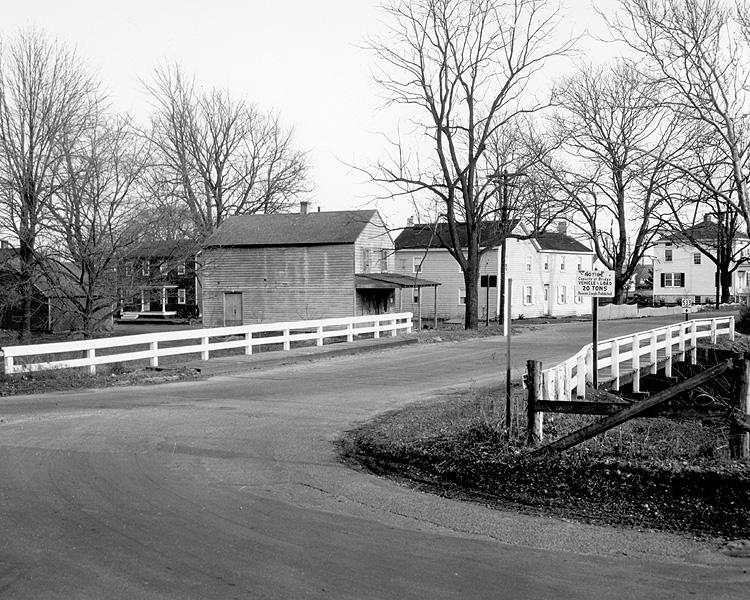CANAL BRIDGES

The stationary bridges along the D&R Canal today are very unlike the original structures that spanned this transportation corridor when it was used for boat traffic. Unlike Pennsylvania’s Delaware Division Canal, all the bridges crossing the D&R Canal were initially movable and gave the canal an advantage - no height restriction. Low profile mule-drawn canal boats, heavily built steam powered vessels, elegant tall-masted ships, and personal yachts were all able to navigate the corridor.
The first bridges along the D&R were A-framed swing bridges. The support for this simple, well designed timber bridge was built in the form of the letter “A” giving the bridge its name. From the peak of the “A” support beams, cables were strung downward and anchored to the bridge’s deck; a span that reached over 68 feet in length. Horse, wagon, carriage and pedestrian traffic crossed the canal when in the closed position.

A bridge tender, employed by the canal company, was responsible for a crossing location where he operated the swing bridge by hand with the aid of a bridge key or wrench using a system of gears and cranks similar to the lift locks. The tender monitored the tension in the supporting suspension cables to keep the bridge in good working order by regularly climbing the attached ladder to the apex of the “A” where he could inspect and tighten the cables as needed. Each tender was provided with a house which was located adjacent to the assigned bridge. The housing was part of the tender’s salary.
Adjacent to each bridge crossing was a small wood framed structure large enough to accommodate a few items such as a chair, table, lamp, and small stove. This bridge tender station allowed the tenders some comfort as they waited for the sound of a boat horn or the blow of the conch shell that signaled the approach of an oncoming vessel. When heard, preparation to open the bridge began. A barricade halted the road traffic before the bridge gears put the well-balanced deck in motion. Slowly the long deck swung low across the waterway to the open position parallel to the side of the canal and cleared the path for the oncoming boat traffic to proceed. Once through, the deck swung back across the canal into the closed position and road traffic resumed.
The A-framed swing bridge served the D&R Canal well for over 80 years before being replaced in the early part of the 20th century with the stouter kingpost style swing bridge better suited to handle the weight of the automobile. As the new horseless carriages arrived and gained popularity in the 19-teens, the need to retire the A-frames grew more pressing. By the 1920s, all the A-frames were replaced by the more practical King-Post swing bridges. Although the D&R Canal closed as a transportation corridor in 1932, these second generation swing bridges remained a fixture along the canal until they were removed and replaced in the early 1950s by the stationary bridges you see today.






